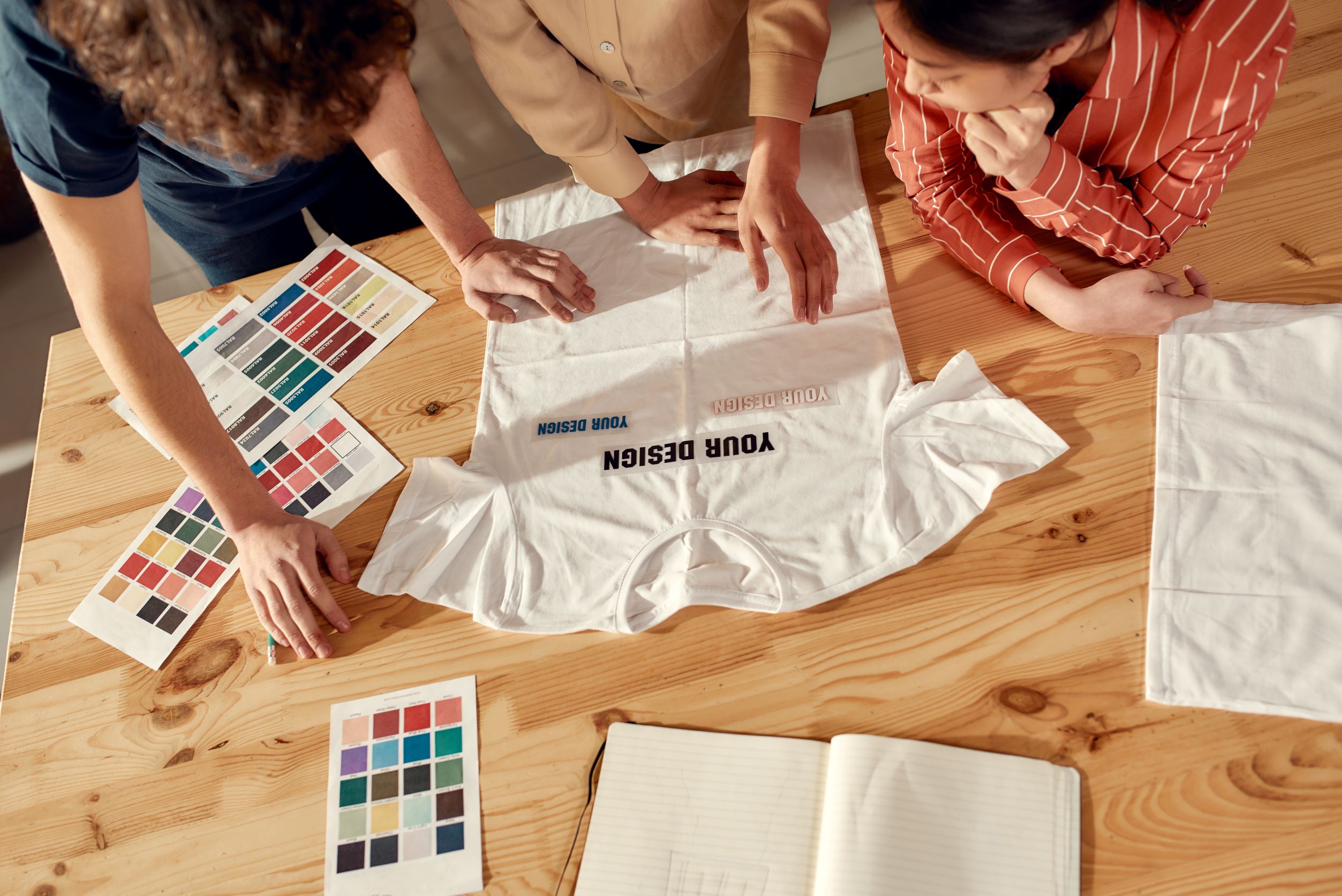Critical consideration for your retail business – merchandising! It’s one of the key elements that can make or break a store. When done correctly, it can create an attractive and inviting shopping environment that draws in customers and encourages them to buy. But when done poorly, it can have the opposite effect. This is why it’s so important to give careful thought to the layout and presentation of your merchandise. Here are some tips to help you get started.
- 8 seconds or less is the average person’s attention span (Intelligence Mode)
- 65% of individuals say they’re visual learners
- 42% of customers say visuals increase message retention
5 Practices to Enhance your Retail Merchandising Strategy
Be Awesome at sales floor merchandising!
- 3% of customers walk out empty-handed from a store because they couldn’t find the product they wanted. (Retail TouchPoints)
When products are displayed and organized well, it makes them more noticeable to customers and encourages them to buy. This is because it is easier for customers to see what is available and what they might be interested in. Good merchandising can also create a more attractive and organized store, which makes the customer experience more pleasant. The following will enhance your sales floor presentation:
Implement cross-merchandising
Cross-merchandising is a visual merchandising strategy that involves displaying complementary products next to each other.
Change floor displays regularly
keep consumers engaged and goods looking new, change your product displays on a regular basis. Keep it interesting! Retailers can improve message retention by roughly 50% using visual displays.
Place merchandise at eye level
Shoppers tend to have short attention spans – Retailers have on average 8 seconds to grab their attention. Pick key high margin products and display them at eye level. Eye-level merchandising is the best way to capture shoppers’ attention
Use complementary products
below and above eye level in support of high-margin eye-level products. (also see: What is a planogram?)
In short, merchandise support tasks include: excelling at sales floor merchandising; maintaining attractive visual presentation, and ensuring accurate merchandise movement. These operational duties must be carried out in an efficient manner to help enhance the store environment for customers!
Emphasize Point Of Purchase (aka, POP) Displays
- Effective POP Displays produce many advantages for manufacturers and retailers. They’ve been known to increase sales by up to 20% in stores, and they definitely can improve the popularity of a brand. (Mediafast)
POP displays are custom designed and usually placed outside of the product’s regular location or “home”. Generally, POP displays are placed in the middle of a store’s aisles or at the end of each aisle, aka “endcap”.
- Stores that utilize POS displays, 79% of them are small and mid-sized brands with sales less than $10 million, while 21% of them are large enterprises
According to Mediafast consumer research, effective point of sale transactions and displays produce many advantages for manufacturers and retailers. They’ve been known to increase sales by up to 20% in stores, and they definitely can improve the popularity of a brand.
Well-organized merchandise creates an inviting atmosphere
Merchandise support is important for retailers because it helps create an inviting atmosphere for customers. Well-organized merchandise makes it easy for customers to find what they’re looking for, which can encourage them to make a purchase. This, in turn, can help retailers reach their sales goals.
It is important to maintain the Maintain Sales Floor
Maintaining attractive visual presentation, and well-kept sales floor is one of the first standards of a successful retail business. Nobody will want to spend any time or money in an unpleasant environment. First impressions are critical as they have the capacity to elicit emotional responses from customers. According to Service Channel’s Brick-and-mortar report:
- 69% percent of shoppers will head to a competitor after a poor or inconsistent retail experience.
The appearance of a store is directly related to the quality of the goods being offered, retail management must devote adequate resources to store upkeep and maintenance of the sales floor. In today’s competitive environment, omnichannel is king: stores’ physical appearances are required to keep up with your brand’s cutting-edge digital experience. Hence, merchandise should be displayed in a compelling and exciting manner.
Seasonal and promotional displays create excitement
What’s more, they can also help to clear the physical inventory process or promote sales. Moreover, by using merchandising to its fullest potential, retailers enhance the shop store environment and create an exceptional customer shopping experience.
- US retail sales in November and December 2020 totaled $789.4 billion.
- Back-to-school shoppers still prefer in-store, with 56 percent of survey respondents having made purchases at brick-and-mortar locations and only 20 percent online.
- According to Easter spending statistics by NRF, 79% of Americans celebrated this day in 2021 and spent $21.6 billion in total. Here is the historic average spending on Easter.
Seasonal merchandise displays offer freshness and variety to a store. Further, it provides opportunities to entice and attract customers. With the right goods and displays, Customers will enjoy their visit ensuring that they return for more purchases.
Organize and Coordinate merchandise support tasks
Merchandisers execute merchandising tasks, and help a company optimize its sales and profits by ensuring that retail stores and online stores are stocked with the right products in the right quantities. This may include stocking shelves, arranging and maintaining product displays, pricing products, and monitoring the store inventory.
Inter-Departmental Coordination is Key
Due to the various types of merchandising activities, it is necessary to coordinate with other departments. The merchandising support associate is able to accomplish this. According to V12 marketing research:
- 54% of retailers said the customer experience is their most important area of focus
Merchandising takes into account how your products come across to consumers as they interact with them in a retail setting, and applies certain techniques to make those interactions as impactful as possible.
What is Retail Merchandising Support?
Merchandising Support Associate’s duties include: boosting sales by creating displays for merchandise and promotions that drive business into the stores, providing training and advice in a helpful and friendly manner to retail store employees, and handling customer service or clerical issues with clients.
- 50% of shoppers seek advice when they enter a store. (CNBC)
- 90% of their shoppers who receive assistance while shopping purchase something, compared to 67% of those who don’t. (MarketForce)
- 79% of shoppers think that being able to engage with a knowledgeable sales associate is important. (Retaildive)
Product knowledge is an essential sales skill. Understanding your products’ features allows associates to present product benefits accurately and persuasively. Customers respond to enthusiastic sales staff who are passionate about the store, and products and are eager to share the benefits with them.
Note: inventory control, accurate pricing, promotional events are all essential functions of merchandising.
Planogram Merchandising
It can consist of activities carried out by both marketing and sales, such as organizing shelves, setting up promotional displays, and tracking the results of merchandising efforts. Having a strong understanding of merchandising, how to execute it, and how it impacts your business is essential to growth.
Brick-and-mortar and online merchandising is an essential part of any retail business. It’s the process of arranging and displaying products in a way that encourages customers to buy them. If you’re not sure how to merchandise your products, or you need help getting started, read on for some tips from our experts. We’ll show you how to create an effective merchandising strategy, and we’ll also provide some examples of merchandise tips that have been successful in stores.
Interested in learning more about merchandising displays? Also read: What is a Planogram?





